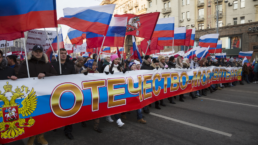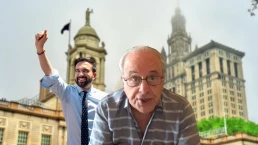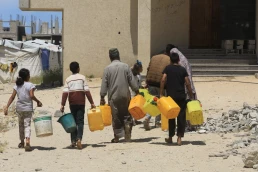The statistics show an 80% margin of support for Putin and the invasion of Ukraine but a list experiment suggests a significant number of Russians hide their true views.
By Philipp Chapkovski, LSE
Survey evidence indicates a majority of Russian citizens support their country’s military action in Ukraine. But does this give an accurate picture of public opinion? Using an innovative list experiment, Philipp ChapkovskiandMax Schaub demonstrate that a significant percentage of Russian citizens are likely to be hiding their true views about the conflict.
In war, the saying goes, truth is often the first casualty. So when several polls showed that up to 80 percent of Russians supported the war against Ukraine, many doubted these figures, including on this blog. Is it possible that support for the brutal invasion is really so high – or is it just that individuals are afraid to share their true opinions? While it is well known that fear of repression can lead to preference falsification, i.e. people publicly supporting positions they privately don’t share, showing that this mechanism is at work is not easy. After all, people are unlikely to say whether they are hiding their true preferences or not if they are hesitant to reveal these preferences in the first place

Why is it important to know the true level of public support for the invasion? One aim of the Western sanctions is to weaken Vladimir Putin’s regime, and at least some observers hope that this will ultimately end Putin’s reign. And while authoritarian regimes are usually undermined by actors from within the elite, popular support for regime change also matters. Without popular support, a coup is doomed, often with fatal consequences for its leaders. The level of popular support for, or disapproval of the war, therefore, is an important determinant for how realistic the hope for regime change is.
A list experiment
As a way to find out if people reported their attitudes towards the war truthfully, we conducted an online survey and a list experiment. In the list experiment, respondents were asked whether they personally supported none, one, two, three, or four of the following things (shown in a random order): 1) monetary monthly transfers for poor Russian families; 2) legalisation of same-sex marriage in Russia; 3) state measures to prevent abortion; and 4) the actions of the Russian armed forces in Ukraine.
Respondents were explicitly asked to only indicate how many of the items they supported, not which one(s). This means that no one will ever know if a given respondent supports the war (item 4). The list experiment therefore solves the problem of preference falsification – it allows respondents to tell the truth. This method has been used to reveal true levels of racism in the United States or to quantify the occurrence of sexual violence during war, to name but two examples.
Recent Posts
“Arrest Now, Ask Questions Later”: Why Did L.A. ICE Agents Arrest and Jail U.S. Citizen Andrea Velez?
July 3, 2025
Take Action Now “They didn’t have vests that said ICE or anything. Their cars didn’t have license plates. … Just because of the color of our…
Trump’s Big, Beautiful Bill Is Naked Class War
July 3, 2025
Take Action Now Trump’s “Big, Beautiful Bill” trades tax cuts on millionaires for the dissolution of society.By Hamilton Nolan, In These Times…
Mayor Mamdani’s First Day, A Zero Hour Conversation With Richard Wolff
July 2, 2025
Take Action Now If elected, what would Mayor Mamdani do on his first day in City Hall? How would a democratic socialist govern as a big-city mayor?……
The U.S. Is Funding A Bloodbath At Gaza Aid Centers
July 2, 2025
Take Action Now The admin just gave $30M to GHF, the organization at the center of charges that Israel is weaponizing assistance and shooting at…




